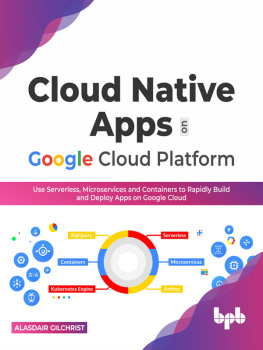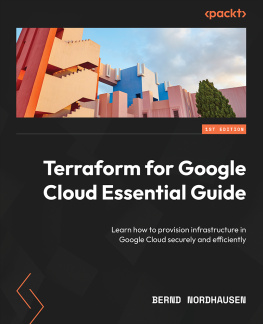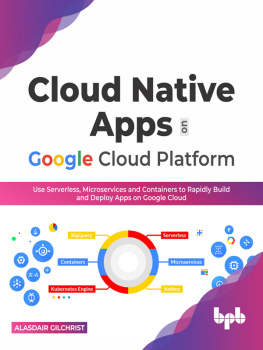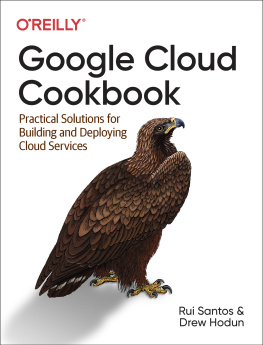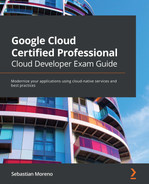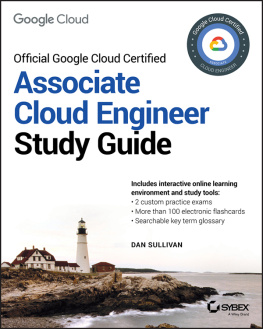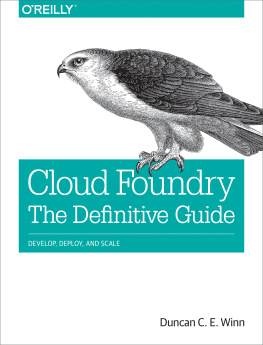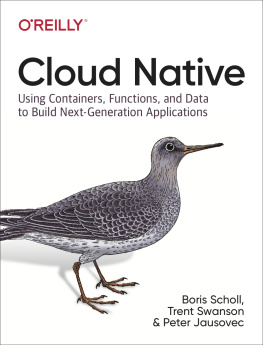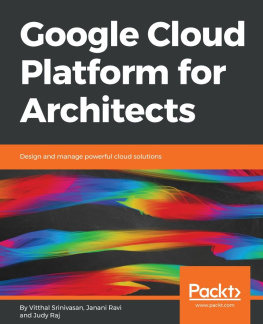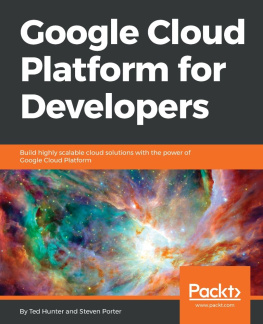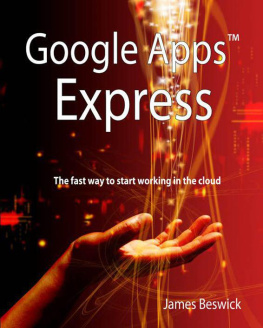Alasdair Gilchrist - Cloud Native Apps on Google Cloud Platform: Use Serverless, Microservices and Containers to Rapidly Build and Deploy Apps on Google Cloud (English Edition)
Here you can read online Alasdair Gilchrist - Cloud Native Apps on Google Cloud Platform: Use Serverless, Microservices and Containers to Rapidly Build and Deploy Apps on Google Cloud (English Edition) full text of the book (entire story) in english for free. Download pdf and epub, get meaning, cover and reviews about this ebook. year: 2022, publisher: BPB Publications, genre: Computer. Description of the work, (preface) as well as reviews are available. Best literature library LitArk.com created for fans of good reading and offers a wide selection of genres:
Romance novel
Science fiction
Adventure
Detective
Science
History
Home and family
Prose
Art
Politics
Computer
Non-fiction
Religion
Business
Children
Humor
Choose a favorite category and find really read worthwhile books. Enjoy immersion in the world of imagination, feel the emotions of the characters or learn something new for yourself, make an fascinating discovery.
- Book:Cloud Native Apps on Google Cloud Platform: Use Serverless, Microservices and Containers to Rapidly Build and Deploy Apps on Google Cloud (English Edition)
- Author:
- Publisher:BPB Publications
- Genre:
- Year:2022
- Rating:4 / 5
- Favourites:Add to favourites
- Your mark:
Cloud Native Apps on Google Cloud Platform: Use Serverless, Microservices and Containers to Rapidly Build and Deploy Apps on Google Cloud (English Edition): summary, description and annotation
We offer to read an annotation, description, summary or preface (depends on what the author of the book "Cloud Native Apps on Google Cloud Platform: Use Serverless, Microservices and Containers to Rapidly Build and Deploy Apps on Google Cloud (English Edition)" wrote himself). If you haven't found the necessary information about the book — write in the comments, we will try to find it.
Step-by-step guide for developing cloud native apps on GCP powered by hands-on interactive learning
Key Features
Cutting-edge coverage on Google Cloud Build, Cloud Run, GKE, Kubectl and Anthos.
Includes tutorials and exercises to learn designing, deploying and running cloud native apps.
Covers Service Mesh, Apps Optimization, logs monitoring and cloud IAM access.
Description
The book Cloud Native Apps on Google Cloud Platformteaches the readers how to design, construct, and maintain successful cloud-native apps using the Google Cloud Platform. With interactive tutorials, the book reinforces learning and helps to develop practical skills for working in an Agile and DevOps context. The book provides a step-by-step approach to building and managing cloud-native applications on Google Cloud Platform for Google Cloud Users, DevOps teams, and Cloud-Native Developers.
First, you will investigate the advantages and applicability of each Google Serverless Computing option. Youll learn about Cloud Build and how to use it to prepare code files, create microservices, and build container images. The book walks readers through creating and running Docker image containers on Cloud Run and App Engine. Youll learn how to use kubectl to create and manage Kubernetes clusters, as well as how to configure the autoscaler for increased resilience and availability. Youll build a pipeline that uses Cloud Build to automate CI/CD and Pub/Sub to ingest streaming data.
Finally, youll have the opportunity to learn about Anthos, which enables you to manage massive GKE clusters in both Cloud and on-premises environments.
What you will learn
Distinguish between using containers or microservices for cloud native apps.
Build a streaming data pipeline using BigQuery and Dataflow using Pub/Sub.
Practice to deploy and optimize cloud native applications on Kubernetes Engine.
Build continuous integration/continuous delivery pipelines and improve Kubernetes apps.
Learn to protect apps running on GCP from cyberattacks.
Who this book is for
This book is meant for the Cloud and DevOps professionals and for those who wish to learn about Google Cloud services and incorporate them into end-to-end cloud applications.
Table of Contents
1. Introducing Cloud Native Apps
2. Developing Cloud Native Apps with Cloud Shell
3. Preparing Source-Code with Cloud Build
4. Create and Deploy Microservices
5. Building and Deploying Containers in Cloud Build
6. Create a Serverless Pipeline with Pub/Sub, Dataflow and BigQuery
7. Container Orchestration with Google Kubernetes Engine
8. Deploying and Managing Kubernetes Applications
9. Optimizing Kubernetes Cluster and Apps in GKE
10. Deploying a CI/CD Pipeline with Kubernetes and Cloud Build
11. Build a Software Delivery Platform with Anthos
12. Application Management with Anthos
13. Securing Cloud Native Apps in Anthos
Alasdair Gilchrist: author's other books
Who wrote Cloud Native Apps on Google Cloud Platform: Use Serverless, Microservices and Containers to Rapidly Build and Deploy Apps on Google Cloud (English Edition)? Find out the surname, the name of the author of the book and a list of all author's works by series.

